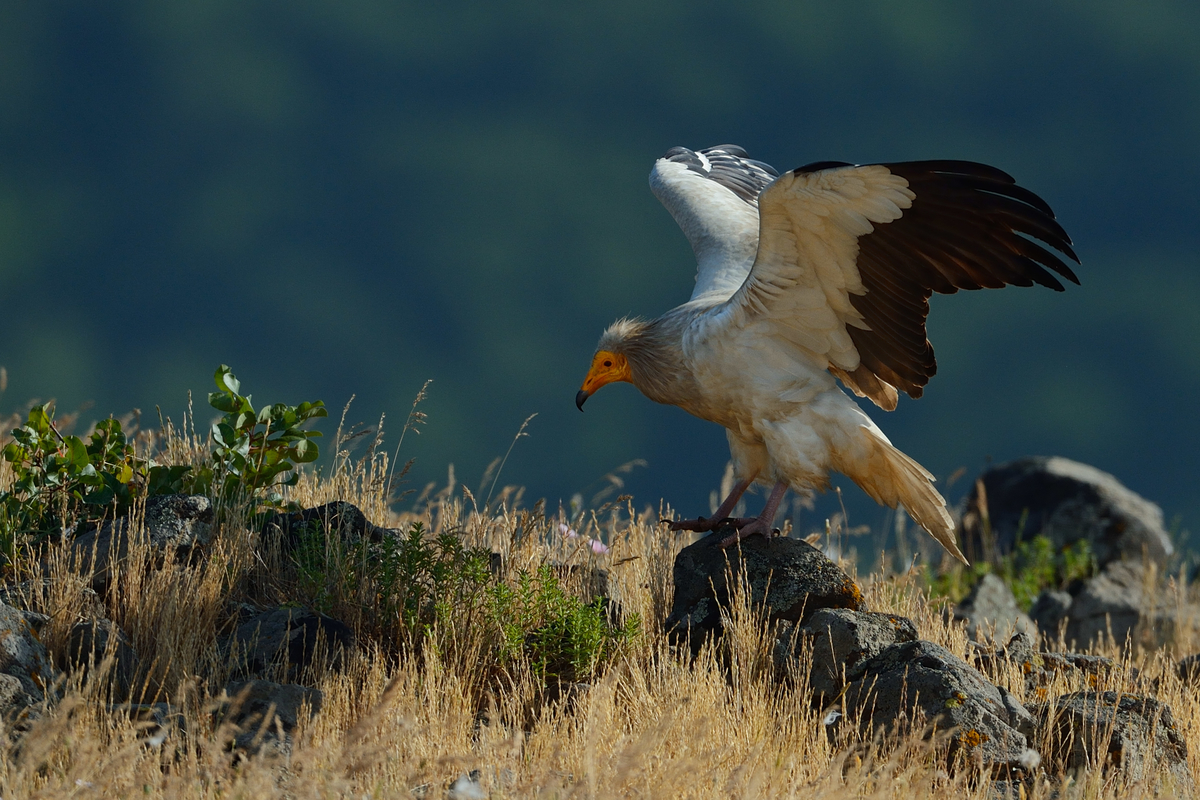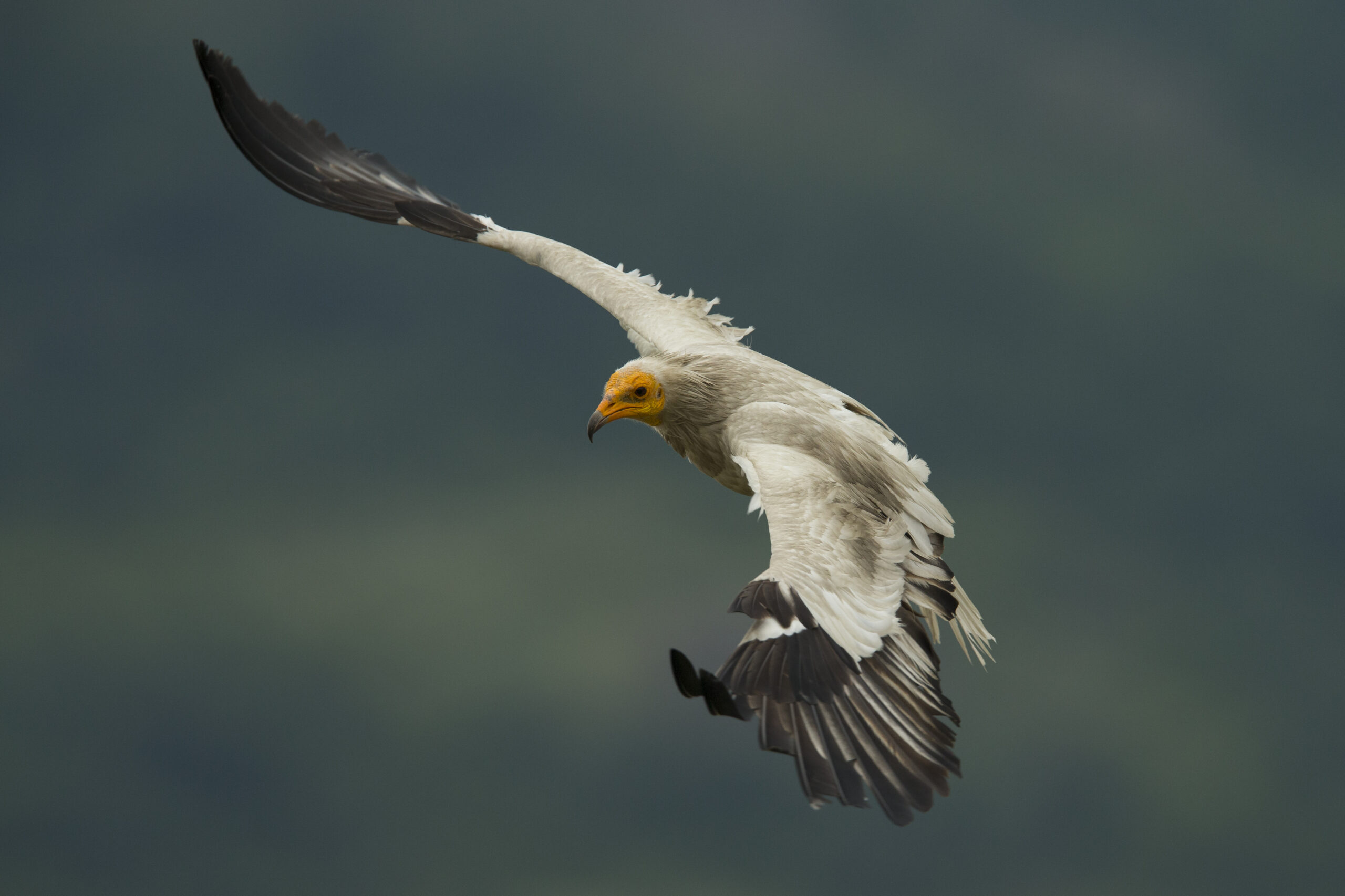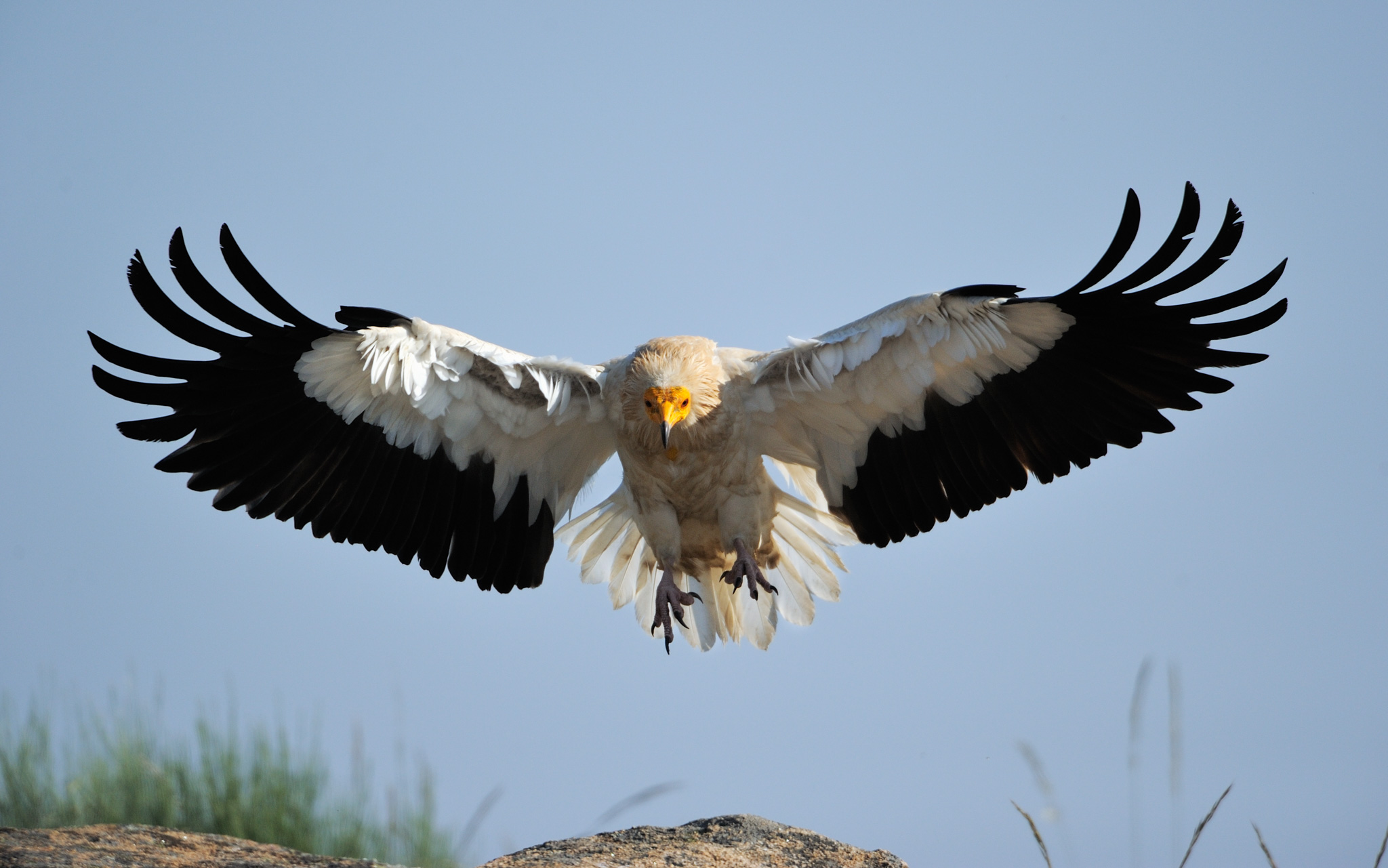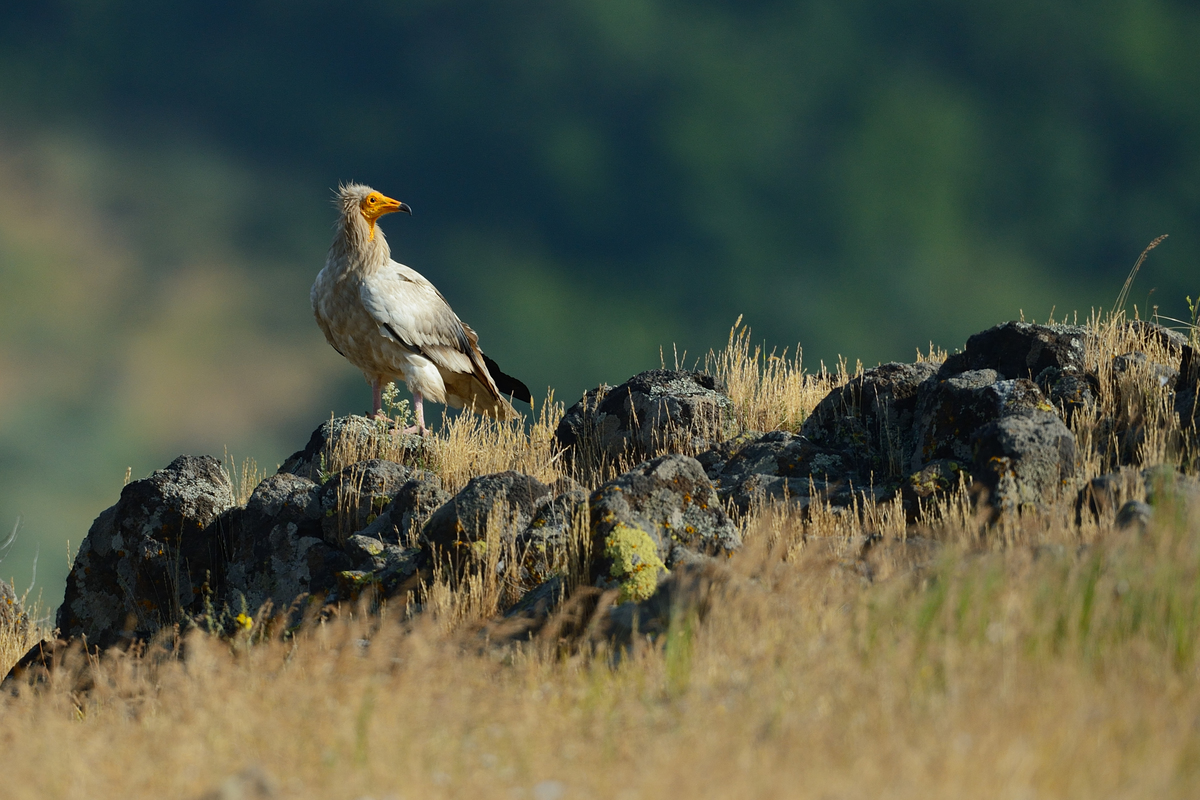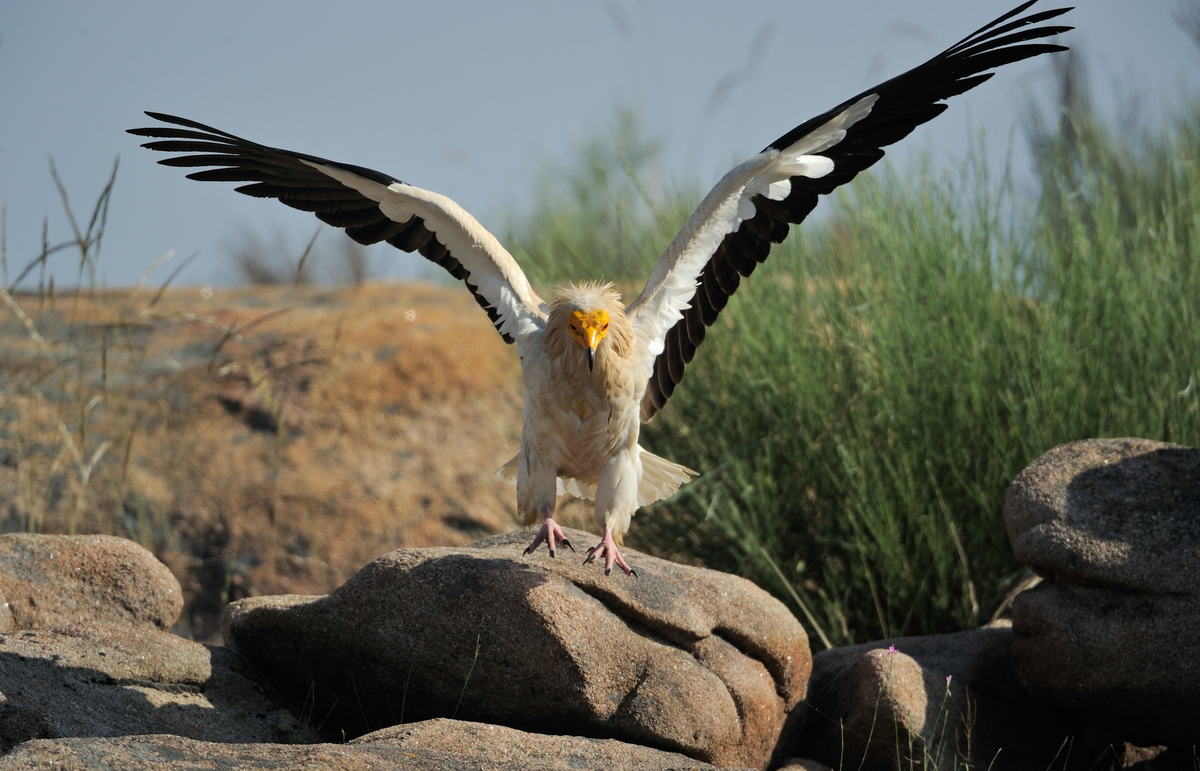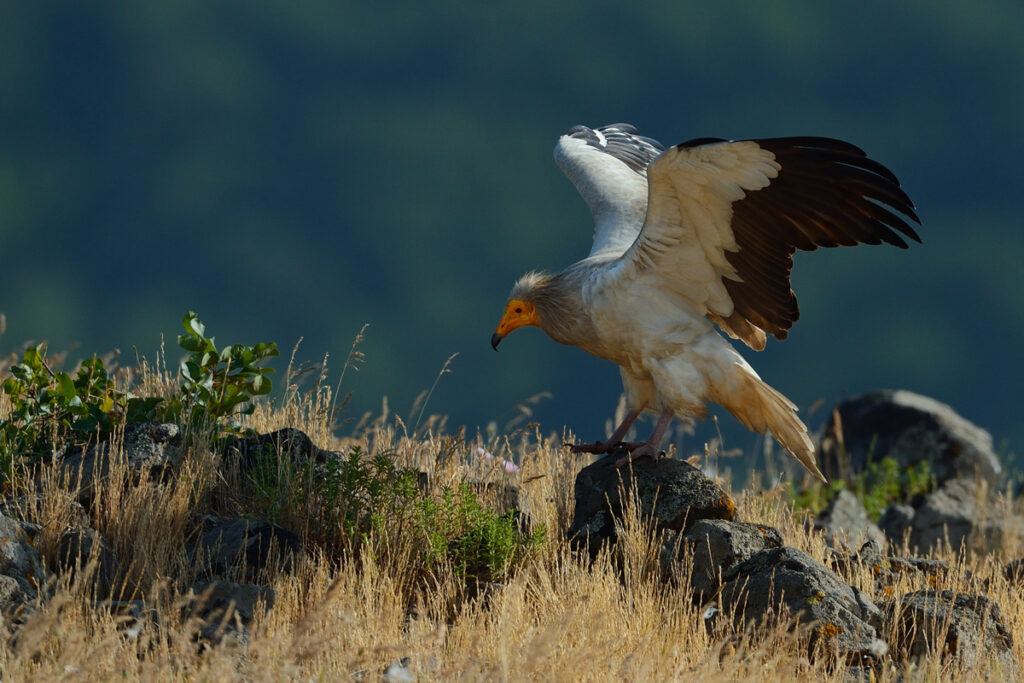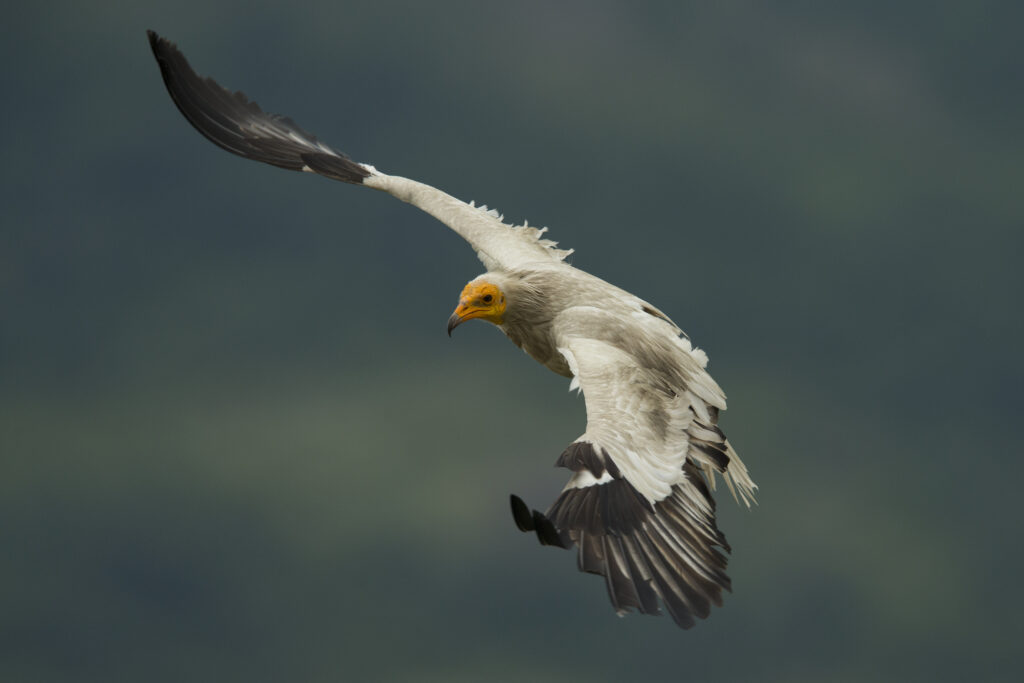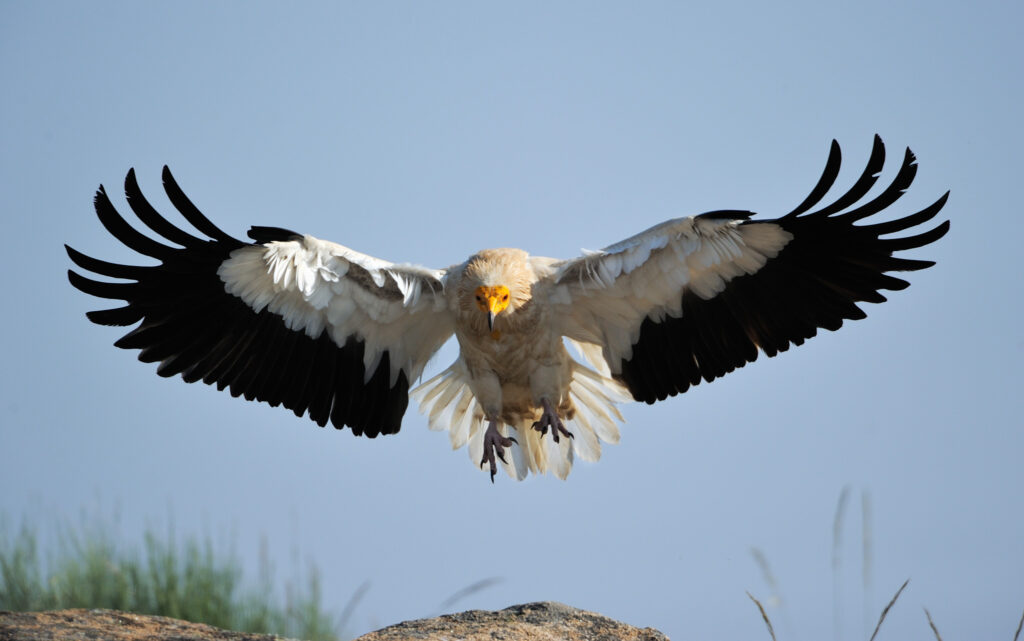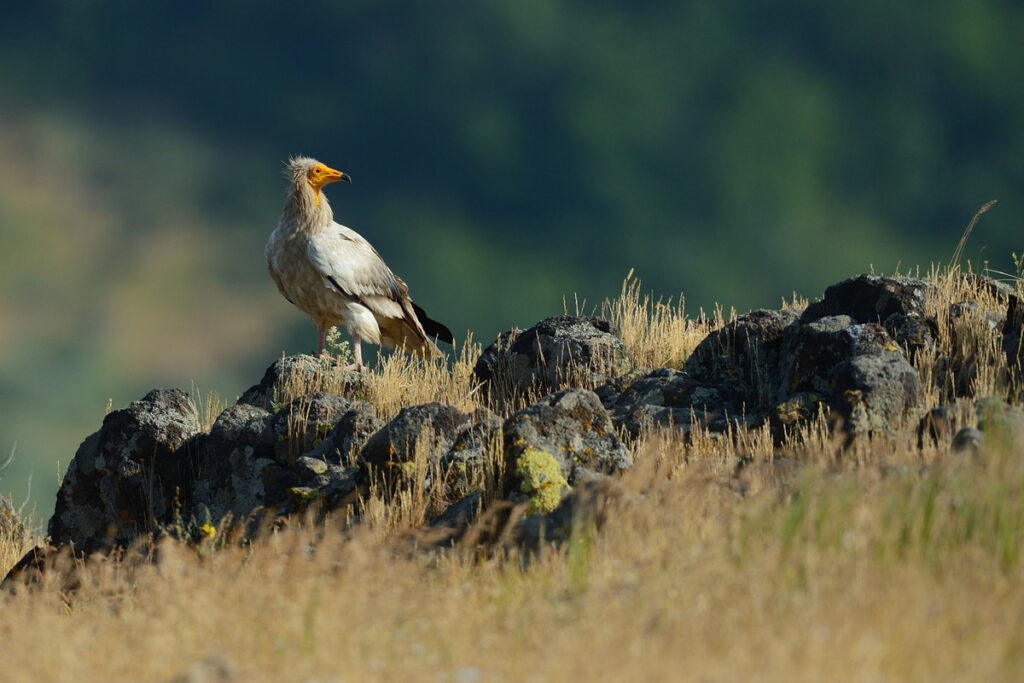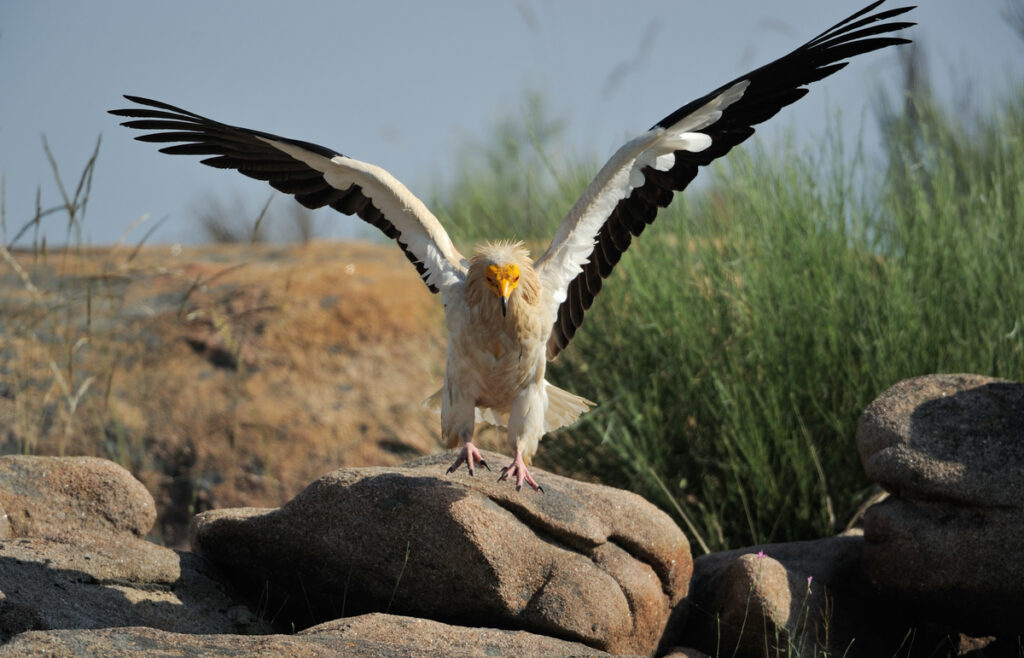Egyptian vulture
In the past the Egyptian vulture was wide-spread throughout Bulgaria and Greece with high population numbers. There are records of pairs nesting even on the hills in the city of Plovdiv in Bulgaria. Today the Balkan Peninsula is home to less than 90 pairs, one of the last and most secure haven for the species are the Eastern Rhodope Mountains. The species is included in the Bulgarian Red List and is protected under the Biodiversity Act. The Egyptian vulture is a globally endangered species, included in the IUCN Red List as “Endangered”.
The Egyptian vulture (Neophron percnopterus) is the smallest of the four species of European vultures. Its small size (wingspan of 180 cm and body length of 60 cm) have led to its other Bulgarian name: ‘lesser vulture’. The adults have white plumage with black flight feathers and featherless yellow-orange face. The crest of white, pointed feathers gives the bird its typical appearance. The tail is white and wedge-shaped. The young are dark brown with light feather tips. As they mature the dark juvenile feathers are gradually replaced with the typical white of the adults. The bird reaches adult plumage in its fifth or sixth year. In flight it can be mistaken for a white stork. The differences are the wedge-shaped tail and the short legs and neck.
The Egyptian vulture is a typical long-distance migrant. In September both young and adult birds leave the nesting territories of the species and start a long journey towards their wintering places in Africa. They migrate in small groups, mainly over land, avoiding long distances over open sea, although some individuals from the southwestern Balkan population regularly cross the Mediterranean Sea. They fly over Turkey and the eastern shores of the Mediterranean Sea and enter African land. Along the migration routes, they gather in great numbers at places with an abundance of food such as dumpsites and feeding stations.
The sites where they gather in Africa are known as “winter homes”; one of the most popular winter homes is south of Sahara, in the Sahel Desert. Here, the Egyptian vultures are amazingly at ease with the humans and can often be seen feeding within village and town boundaries. The data suggests that the birds from the Balkans spend their winters in Chad. Egyptian vultures can also be seen in Ethiopia and Sudan. The young vultures spend their first year in Africa, near to sites with a plentiful food supply. They come back to the nesting territories when they reach 2, or 3 years of age. Together with the long migration this means that the Egyptian vultures spend half their lives away from their nesting territories. In Africa they face a number of threats – poisoning, risky power lines and human aggression are among them. Undoubtedly this has a negative effect on their survival.
Roost in groups usually on cliffs or electric poles. In spring the Egyptians cover over 4 000 km back to their nesting territories – it takes them about 30–40 days. The migration is a critical ordeal for the young birds in particular, as they have less experience and there are a lot of dangers on the way.
